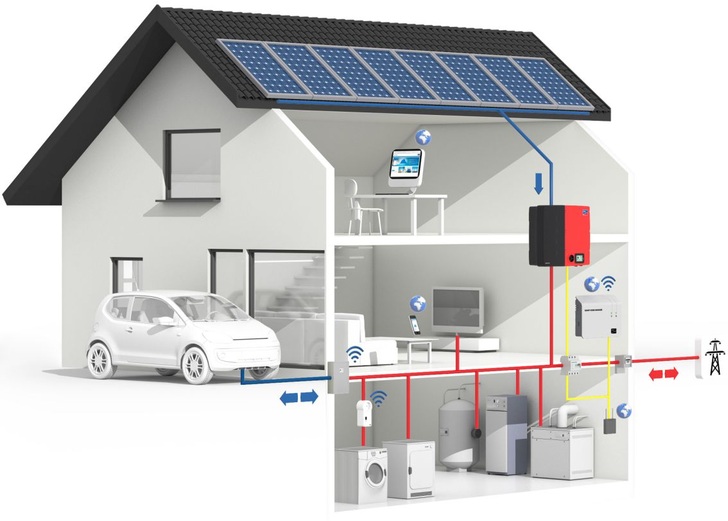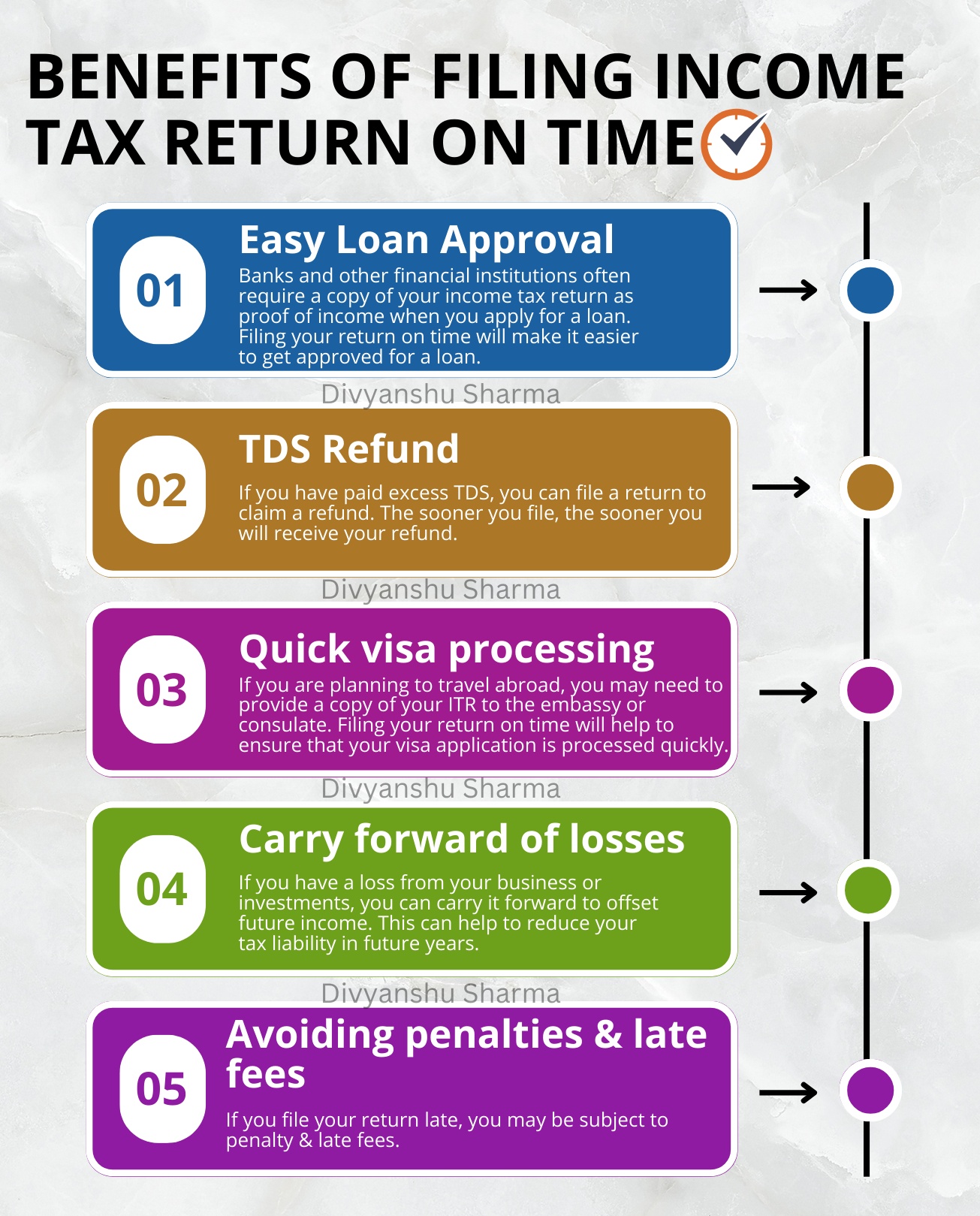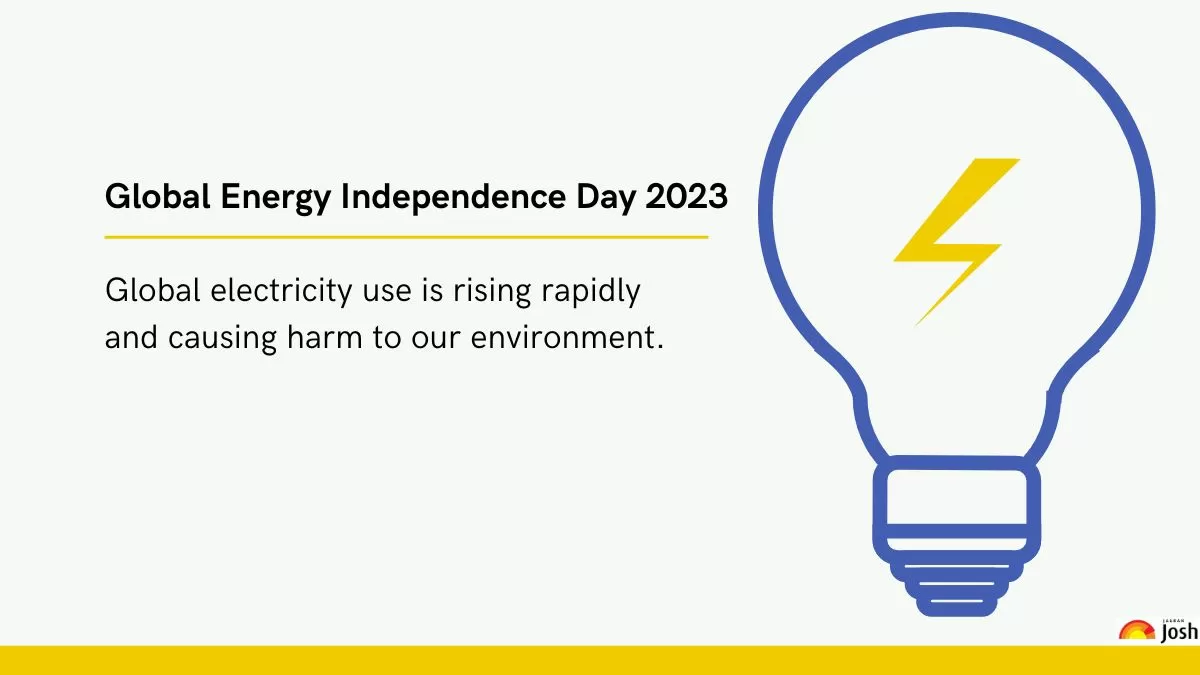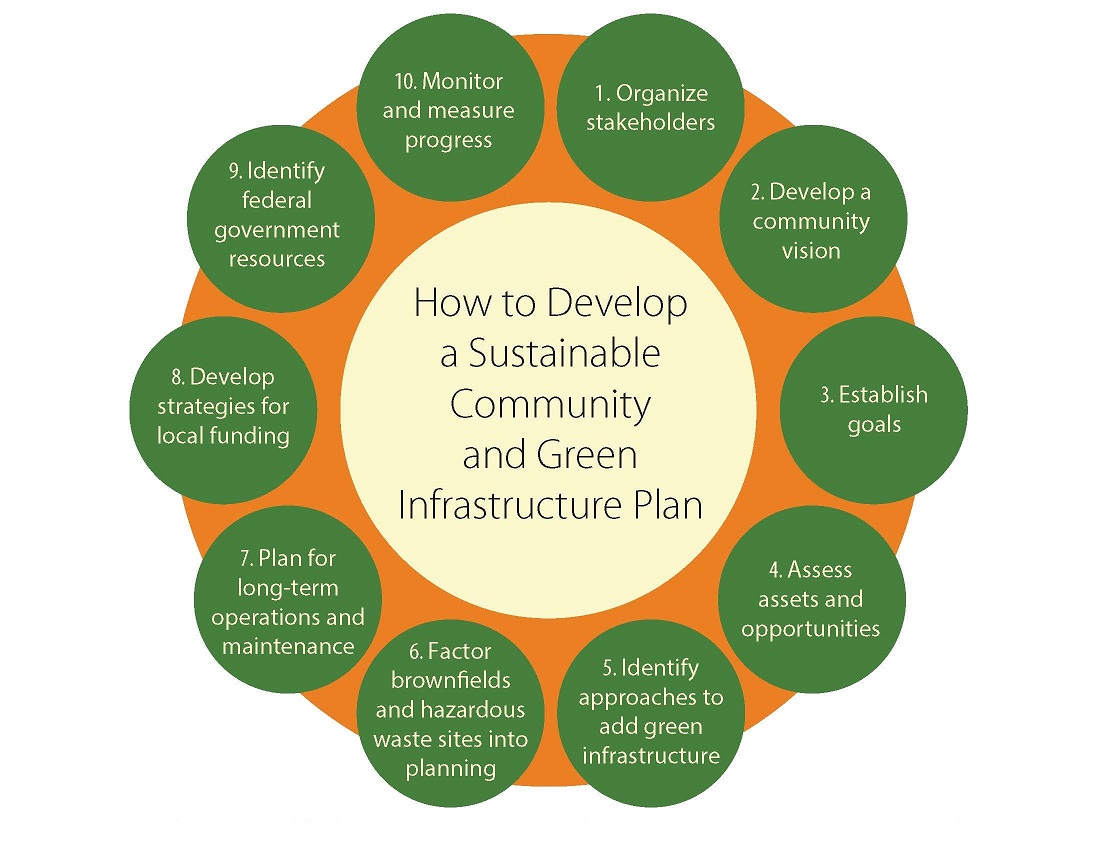Solar Power at Home: Residential Panels for Sustainable Living

Harnessing Sustainable Power: Residential Solar Panels Unveiled
Residential solar panels have become synonymous with sustainable living, offering homeowners an opportunity to generate clean and renewable energy directly from the sun. This article explores the myriad benefits, installation considerations, and the positive environmental impact of embracing solar power through residential solar panels.
The Green Promise of Residential Solar Panels
At the heart of residential solar panels lies a commitment to a greener and more sustainable future. By harnessing sunlight and converting it into electricity, homeowners can significantly reduce their reliance on traditional grid-supplied power, leading to lower carbon emissions and a smaller environmental footprint. The green promise of solar panels aligns with the global push towards renewable energy solutions.
Financial Advantages of Solar Panel Adoption
Beyond environmental considerations, residential solar panels offer substantial financial benefits. While the initial investment may seem significant, the long-term savings on electricity bills can be substantial. Many governments and utility companies provide incentives, rebates, and net metering programs that further enhance the financial attractiveness of adopting solar power at home.
Installation Considerations for Optimal Performance
The successful installation of residential solar panels requires careful consideration of various factors. Roof orientation, tilt angle, shading, and local weather patterns play crucial roles in optimizing solar panel performance. Engaging with professional installers ensures that panels are strategically placed to capture maximum sunlight, ultimately maximizing energy production.
Net Metering: Balancing Energy Consumption and Production
Net metering is a key aspect of residential solar panel systems. This process allows homeowners to balance the energy they consume with the electricity their panels produce. Excess energy generated during sunny days is fed back into the grid, earning credits that can be used during periods of low sunlight or at night. Net metering enhances the economic viability of solar panel adoption.
The Role of Energy Storage Solutions
Energy storage solutions, such as solar batteries, complement residential solar panels by storing excess energy for later use. This addresses the intermittent nature of solar power generation and ensures a consistent power supply, even during cloudy days or at night. The integration of energy storage enhances the reliability and self-sufficiency of solar-powered homes.
Government Incentives and Support
Government incentives and support further encourage homeowners to embrace residential solar panels. Many countries offer tax credits, rebates, and grants to offset the upfront costs of installation. Understanding and utilizing available incentives make solar panel adoption more accessible and financially advantageous for homeowners.
Environmental Impact: Reducing Carbon Footprint
Residential solar panels contribute significantly to reducing the carbon footprint of homes. By generating clean electricity, homeowners decrease their reliance on fossil fuels, thus lowering greenhouse gas emissions. The collective impact of widespread residential solar panel adoption plays a crucial role in addressing climate change and promoting environmental sustainability.
Technological Advances: Making Solar Power Accessible
Advancements in solar technology have made residential solar panels more efficient, durable, and accessible. Improved solar cell efficiency, innovative designs, and the decreasing cost of solar panels contribute to the growing popularity of solar power. Homeowners can now choose from a range of affordable and technologically advanced solar solutions.
Empowering Homeowners for a Sustainable Future
In conclusion, residential solar panels are not just a technology but a powerful tool for homeowners to contribute to a sustainable future. From financial savings and government support to environmental impact and technological advances, the adoption of solar power at home represents a transformative shift towards cleaner and more responsible energy consumption. To explore more about residential solar panels and their transformative potential, visit Residential Solar Panels for valuable insights and resources. Empower your home for a sustainable and sun-powered future.
Pure Power: Transforming to a Clean Energy Home
Pure Power: Transforming to a Clean Energy Home
Switching to clean energy at home is more than just a trend; it’s a sustainable lifestyle choice that brings a myriad of benefits. This article explores the journey toward a clean energy home, covering key aspects from renewable technologies to energy-efficient practices.
Embracing Renewable Technologies
The foundation of a clean energy home lies in embracing renewable technologies. Solar panels, wind turbines, and other renewable energy systems harness the power of nature to generate electricity. Installing these technologies allows homeowners to tap into clean, sustainable sources and reduce dependence on conventional power grids.
The Solar Advantage
Solar energy stands out as a primary player in the clean energy revolution. Solar panels convert sunlight into electricity, offering a reliable and eco-friendly power source. The reduced reliance on fossil fuels not only lowers carbon footprints but also leads to significant cost savings on electricity bills over the long term.
Wind Power for a Breezy Solution
Wind turbines are another pivotal element in the clean energy landscape. Harnessing the power of the wind, these turbines generate electricity without emitting harmful pollutants. Wind power complements solar energy, providing a reliable energy source even when sunlight is limited. Combined, they create a robust renewable energy system.
Energy Efficiency as a Cornerstone
Transforming to a clean energy home involves more than just installing renewable technologies; it requires a commitment to energy efficiency. Simple practices like using energy-efficient appliances, improving insulation, and adopting smart home technologies contribute to reducing overall energy consumption.
Smart Home Integration for Optimal Efficiency
Integrating smart home technologies enhances the efficiency of a clean energy home. Smart thermostats, lighting controls, and energy monitoring systems allow homeowners to optimize energy usage. These technologies not only contribute to sustainability but also provide greater control over energy consumption.
Economic Benefits and Cost Savings
Clean energy homes come with economic benefits. While the initial investment in renewable technologies may seem substantial, the long-term cost savings are significant. Lower energy bills, potential government incentives, and increased home value contribute to the overall economic advantages of embracing clean energy.
Reducing Carbon Footprints for Environmental Impact
One of the primary motivations for transitioning to a clean energy home is the desire to reduce carbon footprints. By relying on renewable sources, homeowners actively contribute to the reduction of greenhouse gas emissions. This environmental impact plays a crucial role in combating climate change and preserving the planet.
Government Incentives and Support
Governments worldwide recognize the importance of clean energy adoption and often provide incentives and support. These can include tax credits, rebates, and other financial perks to encourage homeowners to invest in renewable technologies. Researching and taking advantage of these incentives make the transition more accessible.
Community Impact and Advocacy
Embracing clean energy extends beyond individual homes; it contributes to a broader community impact. Homeowners who adopt clean energy technologies become advocates, inspiring neighbors and communities to follow suit. This collective effort creates a positive ripple effect, fostering a culture of sustainability.
Educational Resources for Clean Living
Educational resources play a vital role in empowering homeowners to make informed choices. Online guides, workshops, and community programs offer valuable insights into clean energy practices, energy-efficient living, and the ongoing advancements in renewable technologies.
Clean Energy Home: A Link to a Sustainable Future
Ready to embark on the journey toward a clean energy home? Explore the possibilities at Clean Energy Home. Discover how transitioning to clean energy not only benefits your household but also contributes to a sustainable future for generations to come.
In conclusion, transforming to a clean energy home is a holistic and rewarding endeavor. From embracing renewable technologies and enhancing energy efficiency to enjoying economic benefits and advocating for sustainability, the journey toward a clean energy home is a step toward a brighter, more sustainable future.
Home Solar Panels: Harnessing Clean Energy for Your Space

Unveiling the Power of Home Solar Panels
As the world embraces sustainable living, home solar panels have emerged as a powerful solution for individuals seeking clean and renewable energy sources. This article explores the transformative benefits of integrating home solar panels into residential spaces, from cost savings to environmental impact, paving the way for a greener and more sustainable future.
Harnessing Solar Energy: The Basics of Home Solar Panels
Home solar panels, also known as photovoltaic (PV) panels, convert sunlight into electricity through the photovoltaic effect. These panels, typically mounted on rooftops or open spaces with ample sunlight exposure, capture sunlight and generate direct current (DC) electricity. Inverter systems then convert DC into alternating current (AC), making it usable for powering homes.
Cost Savings and Return on Investment: Financial Advantages
One of the primary benefits of adopting home solar panels is the potential for significant cost savings and a favorable return on investment (ROI). While the initial installation cost may seem substantial, many homeowners experience reduced or eliminated electricity bills over time. Additionally, various financial incentives, such as tax credits and rebates, make the transition to solar energy financially appealing.
Environmental Impact: Reducing Carbon Footprints
Home solar panels play a crucial role in reducing carbon footprints and mitigating climate change. By harnessing clean energy from the sun, homeowners decrease reliance on traditional energy sources, which often involve the burning of fossil fuels. This shift contributes to lower greenhouse gas emissions, promoting a more sustainable and eco-friendly way of powering homes.
Energy Independence: A Resilient Power Source
Embracing home solar panels provides homeowners with a degree of energy independence. By generating electricity on-site, households become less reliant on external power grids. This not only contributes to a more resilient energy infrastructure but also minimizes vulnerability to power outages, offering a consistent and reliable power supply.
Net Metering: Maximizing Solar Energy Benefits
Net metering is a key incentive for homeowners with solar panels. This system allows excess energy generated by home solar panels to be fed back into the grid, earning homeowners credits on their electricity bills. During periods of lower sunlight or higher energy consumption, homeowners can draw electricity from the grid without incurring additional costs.
Technological Advancements: Enhancing Efficiency and Affordability
The field of solar technology is continually advancing, leading to increased efficiency and affordability of home solar panels. Innovations such as high-efficiency solar cells, smart inverters, and energy storage solutions enhance the overall performance of solar systems, making them more accessible and efficient for homeowners.
Home Value Appreciation: Real Estate Benefits
Homes equipped with solar panels often experience an increase in property value. The demand for eco-friendly and energy-efficient homes has grown, and prospective homebuyers recognize the long-term cost savings associated with solar energy. Installing home solar panels not only contributes to a sustainable lifestyle but can also be a wise investment in the resale value of the property.
Maintenance and Durability: Long-Term Reliability
Home solar panels are known for their low maintenance requirements and durability. With no moving parts, solar panels have a longer lifespan and fewer points of failure compared to traditional energy systems. Routine inspections and occasional cleaning are typically sufficient to ensure optimal performance, making them a reliable and long-term solution.
Community and Global Impact: Joining the Solar Revolution
Embracing home solar panels goes beyond individual benefits; it contributes to a broader community and global impact. As more households adopt solar energy, communities experience reduced strain on traditional power grids, decreased air pollution, and collective progress towards global sustainability goals. Homeowners become integral participants in the solar revolution, shaping a cleaner energy future.
Educational Outreach: Empowering Homeowners with Knowledge
Educational initiatives play a vital role in encouraging the adoption of home solar panels. Workshops, online resources, and community outreach programs empower homeowners with knowledge about the benefits of solar energy, the installation process, and available incentives. Informed homeowners are better equipped to make sustainable choices for their homes.
In conclusion, home solar panels represent a transformative solution for homeowners seeking clean, cost-effective, and sustainable energy. From financial advantages to environmental impact and technological advancements, the adoption of home solar panels aligns with a broader movement towards a greener and more resilient energy landscape. Explore more about Home Solar Panels here and take the first step towards a solar-powered future for your home.
Financial Benefit Returns: Maximizing Investments for Success

Unlocking Success: The Strategic Approach to Financial Benefit Returns
In the world of investments and financial planning, achieving optimal returns is a paramount goal. The concept of financial benefit returns involves adopting a strategic approach to maximize investments, generate profits, and secure long-term financial success. Let’s delve into the key principles and strategies that contribute to unlocking financial benefit returns.
Understanding Financial Benefit Returns: A Comprehensive Perspective
Financial benefit returns encompass a broad spectrum of strategies aimed at generating positive outcomes from financial investments. It goes beyond the traditional view of returns solely in monetary terms; it includes factors such as risk management, portfolio diversification, and aligning investments with specific financial goals. This comprehensive perspective ensures a well-rounded approach to wealth accumulation.
Strategic Investment Planning: The Foundation for Success
At the core of financial benefit returns is strategic investment planning. This involves a careful analysis of financial goals, risk tolerance, and time horizon. By aligning investments with these factors, individuals can create a diversified portfolio that balances potential returns with acceptable levels of risk. Strategic planning lays the foundation for achieving both short-term gains and long-term financial success.
Diversification Strategies: Mitigating Risks for Enhanced Returns
Diversification is a key principle in maximizing financial benefit returns. By spreading investments across different asset classes, industries, and geographical regions, investors can mitigate risks associated with market volatility. Diversification not only safeguards against potential losses but also opens avenues for capturing opportunities in various sectors, ultimately enhancing overall returns.
Risk Management: Balancing Return and Volatility
Effective risk management is integral to the pursuit of financial benefit returns. Investors need to assess their risk tolerance and implement strategies to balance the desire for higher returns with the potential for increased volatility. This may involve a combination of conservative and growth-oriented investments to create a well-balanced and resilient portfolio.
Long-Term Vision: Patience as a Virtue in Wealth Building
Financial benefit returns often materialize over the long term. Patience is a virtue when it comes to wealth building. Investors who maintain a long-term vision and resist the urge to react impulsively to short-term market fluctuations are more likely to experience the compounding effects of investments, resulting in sustained and substantial returns.
Continuous Monitoring and Adjustment: Adapting to Market Dynamics
The financial landscape is dynamic, and successful investors recognize the importance of continuous monitoring and adjustment. Regularly reviewing the portfolio, staying informed about market trends, and making strategic adjustments in response to economic shifts contribute to optimizing financial benefit returns. Flexibility and adaptability are key in navigating ever-changing market dynamics.
Educational Empowerment: Informed Decision-Making for Returns
Knowledge is a powerful tool in the quest for financial benefit returns. Investors who prioritize financial education make informed decisions about their investments. Understanding the fundamentals of various asset classes, staying informed about economic indicators, and seeking professional advice contribute to building a strong foundation for successful wealth management.
Leveraging Technology: Tools for Enhanced Financial Decision-Making
In the digital age, technology plays a pivotal role in optimizing financial benefit returns. Utilizing online platforms, investment apps, and data analytics tools empowers investors to make data-driven decisions. Technology provides real-time information, portfolio analysis, and access to a wide range of investment opportunities, enhancing the efficiency of financial planning and decision-making.
Evaluating Tax Efficiency: Maximizing After-Tax Returns
Financial benefit returns extend beyond the gross returns on investments. Evaluating tax efficiency is crucial for maximizing after-tax returns. Utilizing tax-advantaged accounts, implementing tax-loss harvesting strategies, and understanding the tax implications of different investment decisions contribute to enhancing the overall financial benefit returns.
Building a Holistic Financial Plan: Integration for Success
Ultimately, achieving optimal financial benefit returns requires the integration of various strategies into a holistic financial plan. This plan should encompass short-term and long-term goals, risk management, diversification, and ongoing monitoring. By adopting a comprehensive approach, individuals can position themselves for financial success and ensure that their investments align with their broader life objectives.
Explore the Path to Financial Benefit Returns Today
Ready to embark on the path to financial benefit returns? Visit Financial Benefit Returns for insightful resources, expert guidance, and tools to optimize your financial strategy. Whether you’re a seasoned investor or just starting, the available information will empower you to make informed decisions and maximize your financial benefit returns for a successful future.
Empower Your Home with Solar: Seamless Solar Installation

Empower Your Home with Solar: Seamless Solar Installation
Harnessing the power of the sun through home solar installation has become an increasingly popular choice for environmentally conscious homeowners. Installing solar panels not only contributes to a sustainable future but also offers a range of benefits for homeowners. Let’s delve into the process and advantages of seamless home solar installation.
Understanding the Basics of Solar Installation
Home solar installation involves the placement of photovoltaic (PV) panels on the roof or in an open area on the property. These panels capture sunlight and convert it into electricity through the photovoltaic effect. The generated electricity is then utilized to power the home, reducing reliance on traditional grid-supplied energy.
Site Assessment and Customized Design
The first step in home solar installation is a thorough site assessment. Professionals evaluate factors such as sunlight exposure, roof orientation, and shading to determine the optimal placement of solar panels. Following the assessment, a customized solar design is created, ensuring maximum energy production and efficiency for the specific property.
Professional Installation Process
Once the design is finalized, the actual installation process begins. Experienced solar installers handle the mounting of solar panels, electrical wiring, and connection to the home’s electrical system. Professional installation ensures compliance with local regulations and standards, guaranteeing a safe and efficient solar energy system for the home.
Integration with Home Electrical Systems
Home solar installation seamlessly integrates with the existing electrical systems of the house. The generated solar power can either directly power the home’s electrical needs or be stored in batteries for later use. In cases where the solar system produces excess energy, homeowners may have the option to feed it back into the grid, earning credits or incentives.
Financial Incentives and Cost Savings
One of the significant advantages of home solar installation is the potential for financial incentives and long-term cost savings. Many governments offer tax credits, rebates, and other financial incentives to encourage the adoption of solar energy. Additionally, homeowners can experience substantial savings on their energy bills as they rely more on clean, renewable solar power.
Environmental Benefits of Solar Energy
Choosing home solar installation contributes to a reduction in greenhouse gas emissions and environmental impact. Solar energy is a clean and renewable resource, producing electricity without the pollution associated with traditional energy sources. By opting for solar, homeowners actively participate in mitigating climate change and promoting a greener planet.
Increased Property Value
Homes equipped with solar panels often see an increase in property value. The investment in home solar installation is viewed positively by potential buyers, and the long-term energy savings add to the overall appeal of the property. Solar-equipped homes stand out in the real estate market as sustainable and forward-thinking.
Low Maintenance and Durability
Solar panels are designed to be durable and require minimal maintenance. Regular cleaning and occasional checks by professionals are usually sufficient to ensure optimal performance. With no moving parts, solar panels have a long lifespan, providing a reliable and low-maintenance energy solution for homeowners.
Community and Energy Independence
Home solar installation fosters a sense of community and energy independence. Solar-equipped homes contribute to local energy production, reducing the demand on centralized power grids. This decentralized energy model enhances resilience, especially in times of grid outages or emergencies, providing homeowners with a more reliable source of power.
Embracing a Sustainable Lifestyle
Beyond the practical benefits, home solar installation allows homeowners to embrace a sustainable lifestyle actively. By generating clean energy on-site, individuals contribute to a more sustainable energy future. This conscious choice aligns with a broader commitment to environmental stewardship and reducing one’s carbon footprint.
In conclusion, home solar installation is a transformative step towards a more sustainable and energy-efficient future. From the seamless integration of solar panels to the financial incentives and environmental benefits, homeowners can empower their homes with clean, renewable energy. To explore more about home solar installation, visit Home Solar Installation.
Financial Benefit Returns: Maximizing Your Investments

Navigating the Landscape: Unlocking Financial Benefit Returns
In the realm of investments and financial planning, the pursuit of financial benefit returns takes center stage. Understanding how to maximize returns on investments is crucial for individuals seeking to build wealth, secure their financial future, and achieve their long-term goals. This article explores key strategies, considerations, and the importance of a well-rounded approach to financial benefit returns.
Diversification Strategies: Spreading the Risk
Diversification is a fundamental strategy in optimizing financial benefit returns. By spreading investments across various asset classes, industries, and geographic regions, investors can mitigate risks associated with market volatility. Diversification not only safeguards against potential losses in specific sectors but also positions portfolios to capture opportunities for growth.
Risk Management: Balancing Risk and Reward
Achieving significant financial benefit returns often involves a delicate balance between risk and reward. While higher-risk investments may offer the potential for greater returns, they also come with increased volatility and the possibility of significant losses. Understanding risk tolerance, time horizons, and financial goals is essential in developing a risk management strategy that aligns with individual preferences.
Investment Planning: Aligning with Financial Goals
Effective investment planning is a cornerstone of realizing financial benefit returns. Investors should define clear financial goals, whether short-term or long-term, and tailor their investment portfolios accordingly. Whether the objective is wealth accumulation, retirement planning, or funding educational expenses, aligning investments with specific goals enhances the likelihood of achieving desired financial outcomes.
Market Research and Analysis: Informed Decision-Making
Staying informed through market research and analysis is integral to optimizing financial benefit returns. Keeping abreast of economic trends, industry developments, and geopolitical factors allows investors to make informed decisions. This proactive approach empowers investors to adjust their portfolios in response to changing market conditions, potentially capitalizing on emerging opportunities.
Long-Term Perspective: Patience as a Virtue
A long-term perspective is a valuable asset in the pursuit of financial benefit returns. While short-term market fluctuations may create uncertainty, a focus on the long-term horizon allows investors to ride out market cycles and benefit from the compounding effect of returns over time. Patience and discipline are key virtues for those seeking sustained financial growth.
Tax-Efficient Strategies: Maximizing After-Tax Returns
Implementing tax-efficient strategies is crucial in maximizing after-tax financial benefit returns. Utilizing tax-advantaged accounts, tax-loss harvesting, and understanding the tax implications of investment decisions contribute to optimizing returns. Minimizing tax liabilities allows investors to retain a larger portion of their earnings, enhancing overall portfolio performance.
Professional Guidance: Leveraging Expertise
Seeking professional guidance is a prudent step in navigating the complexities of financial benefit returns. Financial advisors and investment professionals bring expertise and market insights to the table, assisting investors in making informed decisions aligned with their financial objectives. Collaborating with professionals ensures a well-informed and strategic approach to investment management.
Adaptability and Flexibility: Responding to Change
The financial landscape is dynamic, requiring investors to remain adaptable and flexible in their strategies. Market conditions, economic factors, and personal circumstances can change, necessitating periodic reassessment and adjustment of investment portfolios. Embracing adaptability allows investors to optimize their financial benefit returns in response to evolving conditions.
Education and Empowerment: Knowledge is Key
Investors are empowered when armed with knowledge. Ongoing education about financial markets, investment instruments, and economic trends enhances investors’ ability to make sound decisions. By continuously expanding their financial literacy, individuals gain the confidence to navigate the complexities of investing and capitalize on opportunities for financial benefit returns.
Conclusion: Maximizing Returns on the Financial Journey
In conclusion, the pursuit of financial benefit returns is a dynamic journey that requires a thoughtful and multifaceted approach. From diversification and risk management to investment planning and tax-efficient strategies, investors can employ various tools and strategies to optimize returns. Embracing a long-term perspective, seeking professional guidance, and staying informed contribute to a well-rounded strategy for maximizing financial benefit returns. Explore more about Financial Benefit Returns here and embark on a journey toward financial empowerment and growth.
Energy Independence Benefit: Unleashing Power and Freedom

Unleashing Power and Freedom: The Energy Independence Benefit
Embarking on the journey towards energy independence is not just a choice; it’s a transformative decision that brings forth numerous benefits. Explore the Energy Independence Benefit, a pathway to power, sustainability, and freedom.
Defining the Energy Independence Benefit
The Energy Independence Benefit signifies a departure from traditional energy dependence towards a self-sufficient and sustainable energy model. It involves generating one’s electricity, reducing reliance on external energy sources, and achieving autonomy in meeting daily energy needs.
Harnessing Power from Renewable Sources
At the core of the Energy Independence Benefit is the utilization of renewable energy sources. Solar panels, wind turbines, and other clean technologies harness power from nature, providing a consistent and sustainable energy supply. This not only contributes to a greener planet but also ensures a reliable source of electricity for individuals.
Reducing Environmental Impact
One of the significant environmental advantages of the Energy Independence Benefit is the reduction of carbon footprint. By relying on renewable energy, individuals decrease their reliance on fossil fuels, leading to a decrease in greenhouse gas emissions. This shift contributes to mitigating climate change and fostering a cleaner, healthier environment.
Energy Cost Savings and Financial Empowerment
Embracing energy independence often leads to notable cost savings. Generating one’s electricity translates to reduced or eliminated monthly utility bills. The financial empowerment derived from these savings provides individuals with more control over their budget and offers long-term economic benefits.
Resilience in the Face of Power Outages
The Energy Independence Benefit extends beyond financial aspects; it also enhances resilience during power outages. Homes equipped with renewable energy sources, such as solar panels with battery storage, can continue to function even when the grid experiences disruptions. This resilience is invaluable in ensuring a continuous power supply during emergencies.
Government Incentives and Support
Governments worldwide recognize the importance of energy independence and often offer incentives to encourage its adoption. These incentives may include tax credits, rebates, and favorable financing options, making the transition to renewable energy more accessible and financially attractive.
Customized Solutions for Diverse Needs
The Energy Independence Benefit accommodates diverse energy needs and preferences. Individuals can choose from various renewable energy systems, including solar photovoltaic (PV) systems, wind turbines, and hydropower setups. The flexibility allows for customized solutions that align with the unique characteristics of different properties.
Educational Resources for Informed Choices
Making the most of the Energy Independence Benefit requires knowledge and understanding. Educational resources, such as those available at SolarHelp.info, provide insights into renewable energy technologies, installation processes, and the long-term benefits of embracing energy independence. Informed choices pave the way for a successful transition.
Fostering Energy Security and Independence
The Energy Independence Benefit contributes to overall energy security. By diversifying the sources of energy and reducing dependence on centralized grids, individuals foster a more secure energy future. This decentralized approach enhances the stability and reliability of energy supply.
A Sustainable Future: Embrace the Energy Independence Benefit
In conclusion, the Energy Independence Benefit is not just a choice for today; it’s an investment in a sustainable future. By unlocking the power of renewable energy sources, individuals gain control over their energy destiny, reduce environmental impact, and contribute to a more resilient and sustainable world.
Explore the Path to Energy Independence at SolarHelp.info
Ready to embark on the journey towards energy independence? SolarHelp.info offers valuable resources, guides, and insights to support your quest for clean, sustainable, and independent energy. Explore the possibilities, understand the benefits, and take the first steps towards a future powered by your energy choices.
Maximizing Sustainable Resources: A Path to Environmental Benefits

Unveiling the Environmental Advantages of Sustainable Resource Management
Sustainable resource management is a powerful approach that not only benefits the environment but also contributes to a more resilient and balanced ecosystem. Let’s delve into the various ways in which maximizing sustainable resources offers substantial environmental benefits.
Harnessing Renewable Energy for a Greener Tomorrow
At the forefront of sustainable resource management is the utilization of renewable energy sources. Transitioning to solar, wind, and hydropower not only reduces dependence on finite fossil fuels but also curtails harmful emissions. Embracing renewable energy is a key step towards a sustainable future, fostering cleaner air and mitigating the impact of climate change.
Efficient Waste Management for a Cleaner Environment
Effective waste management is a pivotal aspect of sustainable resource benefit. By adopting recycling, composting, and responsible disposal practices, communities can significantly reduce the strain on landfills. This approach minimizes pollution, conserves valuable resources, and promotes a circular economy that prioritizes reuse and sustainability.
Biodiversity Conservation through Sustainable Practices
Sustainable resource management plays a crucial role in preserving biodiversity. By implementing eco-friendly agricultural practices, protecting natural habitats, and adhering to responsible forestry methods, we safeguard the diversity of plant and animal species. A rich biodiversity is essential for ecosystem resilience and the well-being of the planet.
Water Conservation for Future Generations
Maximizing sustainable resources extends to the responsible use and conservation of water. Implementing water-efficient technologies, capturing rainwater, and promoting responsible irrigation practices contribute to water conservation. This ensures a sustainable supply of this precious resource for current and future generations while mitigating the impact of droughts and water scarcity.
Eco-Friendly Agriculture: Nurturing the Soil and Ecosystem
Sustainable resource benefit is evident in eco-friendly agricultural practices. Organic farming methods prioritize soil health, reduce reliance on synthetic pesticides and fertilizers, and promote biodiversity within agricultural landscapes. These practices not only yield healthier crops but also contribute to long-term soil fertility and environmental well-being.
A Holistic Approach to Sustainable Resource Benefit
Taking a holistic approach to sustainable resource management involves considering the interconnectedness of various environmental factors. This includes addressing climate change, promoting responsible consumption patterns, and advocating for policies that prioritize sustainability. By adopting a comprehensive perspective, individuals and communities can maximize the environmental benefits of sustainable resource management.
Sustainable Resource Benefit: A Link to Environmental Stewardship
For those eager to explore more about the environmental benefits of sustainable resource management, visit Sustainable Resource Benefit. This resource provides valuable insights, tips, and information on how individuals can actively participate in environmental stewardship by maximizing sustainable resources in their daily lives.
Green Technologies: Paving the Way for a Sustainable Future
Innovations in green technologies play a pivotal role in sustainable resource management. From energy-efficient appliances to smart grids, these technologies contribute to resource conservation and reduced environmental impact. Investing in and adopting these technologies accelerates the transition towards a more sustainable and eco-friendly future.
Community Engagement: Fostering a Culture of Sustainability
The collective impact of sustainable resource management is amplified through community engagement. Educating and involving communities in sustainable practices create a culture of environmental responsibility. From local initiatives to global movements, community-driven efforts play a crucial role in achieving a more sustainable and resilient planet.
Conclusion: Embracing the Rewards of Sustainability
In conclusion, the benefits of sustainable resource management extend far beyond individual actions. From renewable energy adoption to efficient waste management and eco-friendly agriculture, each sustainable practice contributes to a healthier and more balanced environment. By understanding and maximizing sustainable resources, we pave the way for a future where environmental benefits are a collective reward for responsible stewardship.
Flow Renewed: Solutions for Home Drain Unblock

Flow Renewed: Navigating Solutions for Home Drain Unblock
Clogged drains can disrupt the flow of daily life, causing inconvenience and potential damage. This article explores effective solutions for home drain unblock, offering insights into prevention, DIY methods, and the importance of professional assistance.
Understanding the Causes of Clogged Drains
Before delving into solutions, it’s crucial to understand the common causes of clogged drains. Hair, soap scum, food particles, grease, and foreign objects are frequent culprits. Identifying the cause helps in selecting the most appropriate solution for effective home drain unblocking.
Preventive Measures for Clog Avoidance
Prevention is the first line of defense against clogged drains. Implementing simple preventive measures can go a long way in maintaining a clear and free-flowing drainage system. Use drain screens to catch hair and debris, avoid pouring grease down the sink, and dispose of food waste properly to minimize the risk of clogs.
DIY Methods for Home Drain Unblock
Several do-it-yourself methods can be employed to address minor drain blockages. Boiling water, a mixture of baking soda and vinegar, or a bent wire hanger can be effective tools. These DIY remedies are often successful in breaking down and flushing away common causes of clogs without the need for professional intervention.
Chemical Drain Cleaners: Pros and Cons
Chemical drain cleaners are readily available and can provide quick results in some cases. However, they come with pros and cons. While they can dissolve certain clogs, the harsh chemicals may damage pipes over time and pose health and environmental risks. It’s essential to use them cautiously and as a last resort.
Plungers and Augers: Mechanical Assistance
Plungers and augers (or drain snakes) are mechanical tools that can prove highly effective in dislodging stubborn clogs. Plungers create pressure to push or pull blockages, while augers navigate through pipes to physically break up or extract debris. These tools are valuable assets in the toolkit of home drain unblocking.
Professional Drain Cleaning Services
For persistent or complex clogs, seeking the expertise of professional drain cleaning services is advisable. Professional plumbers utilize advanced equipment such as hydro-jetting and drain cameras to identify and clear blockages effectively. Regular professional maintenance can prevent recurring issues and ensure the longevity of your drainage system.
Importance of Timely Intervention
Addressing clogged drains promptly is crucial to prevent further complications. Ignoring the issue may lead to more severe blockages, water damage, and potential structural issues. Timely intervention ensures that minor clogs do not escalate into major problems, saving both time and money in the long run.
Eco-Friendly Drain Unblock Alternatives
For environmentally conscious homeowners, exploring eco-friendly drain unblock alternatives is a responsible choice. Biodegradable drain cleaners and enzymatic cleaners utilize natural ingredients to break down organic matter, offering effective solutions without the environmental impact associated with harsh chemicals.
Educational Resources for Home Drain Maintenance
Empowering homeowners with knowledge about proper drain maintenance is essential. Educational resources, such as online guides and tutorials, can provide insights into preventive measures, DIY techniques, and when to seek professional assistance. A well-informed approach to home drain care contributes to a smoothly running plumbing system.
Home Drain Unblock: A Link to Hassle-Free Living
Ready to address drain issues and restore the flow in your home? Explore effective solutions for home drain unblock at Home Drain Unblock. Discover tips, techniques, and professional services to keep your drains clear and your home running smoothly.
In conclusion, maintaining a clear and unblocked drainage system is integral to the smooth functioning of a home. From preventive measures and DIY methods to professional assistance, homeowners have a range of options to address clogged drains effectively. By understanding the causes and implementing timely solutions, you can ensure a hassle-free and efficient drainage system.
Maximizing Financial Returns: Smart Strategies for Wealth Growth

Maximizing Financial Returns: Smart Strategies for Wealth Growth
In a world where financial stability is a primary goal for many individuals, exploring smart strategies for wealth growth becomes crucial. Achieving financial benefit returns involves strategic planning and informed decision-making. Let’s delve into some key approaches to maximize your financial returns.
Diversify Your Investment Portfolio
Diversification is a fundamental strategy to minimize risk and optimize financial returns. Spread your investments across different asset classes such as stocks, bonds, real estate, and commodities. This approach helps mitigate the impact of poor performance in one area, enhancing overall portfolio stability.
Explore High-Yield Investment Options
Consider incorporating high-yield investment options into your portfolio. These investments, which may include dividend-paying stocks, real estate investment trusts (REITs), and certain bonds, have the potential to generate significant returns. However, it’s essential to conduct thorough research and assess the associated risks before making such investment decisions.
Take Advantage of Tax-Efficient Investments
Optimizing your tax strategy is a key element in maximizing financial returns. Explore tax-efficient investment options, such as retirement accounts and tax-advantaged savings plans. By strategically managing your tax liabilities, you can retain more of your earnings and contribute to long-term wealth accumulation.
Regularly Review and Rebalance Your Portfolio
Market conditions and economic factors can impact the performance of your investments. Regularly reviewing and rebalancing your portfolio ensures that your asset allocation aligns with your financial goals. This proactive approach helps you take advantage of growth opportunities while mitigating potential risks.
Leverage the Power of Compound Interest
Compound interest is a powerful force that can significantly boost your financial returns over time. Reinvesting your earnings allows you to earn returns not just on your initial investment but also on the accumulated interest. The longer your money compounds, the greater the potential for exponential growth.
Embrace a Long-Term Investment Perspective
Timing the market is challenging and often leads to suboptimal outcomes. Instead, adopt a long-term investment perspective. Focus on the fundamentals of your investments and resist the urge to react to short-term market fluctuations. This patient approach increases the likelihood of realizing substantial financial returns.
Stay Informed and Educate Yourself
Knowledge is a valuable asset in the world of finance. Stay informed about market trends, economic indicators, and investment opportunities. Continuous education empowers you to make informed decisions, navigate financial markets, and adapt your strategies to changing circumstances.
Consider Professional Financial Advice
Engaging with a qualified financial advisor can provide personalized guidance tailored to your unique financial situation. A professional can help you develop a comprehensive financial plan, identify suitable investment opportunities, and navigate complex financial decisions. Their expertise can contribute to optimizing your financial benefit returns.
Manage Debt Wisely
Effectively managing debt is a crucial aspect of maximizing financial returns. High-interest debt can erode your overall financial health. Prioritize paying off high-interest loans and credit card balances to free up more funds for investment and wealth-building activities.
Plan for Retirement and Future Expenses
Investing in retirement accounts and planning for future expenses is a strategic way to secure long-term financial benefit returns. Take advantage of employer-sponsored retirement plans, such as 401(k)s, and contribute consistently. Additionally, allocate funds for major life events, such as education expenses and homeownership, to ensure financial preparedness.
In conclusion, achieving financial benefit returns involves a combination of strategic planning, informed decision-making, and a disciplined approach to wealth management. By diversifying investments, staying informed, and adopting a long-term perspective, you can navigate the financial landscape with confidence. To explore more insights on maximizing financial benefit returns, visit Financial Benefit Returns.

